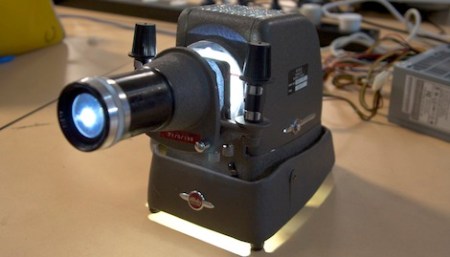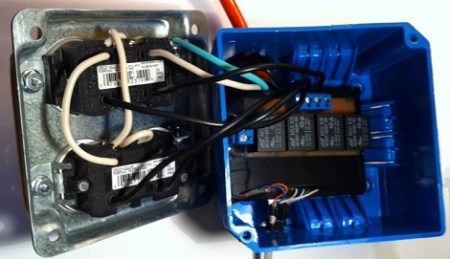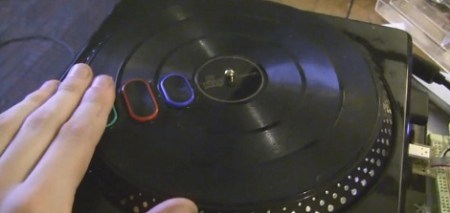
Who hasn’t thought about turning a 1950s slide projector into a digital projector? [Matt] did, but unlike most of us, he actually did it.
[Matt]’s friend [Angus] found an old, single-slide, sans-carousel slide projector in the trash. It’s a wonderful piece of ancient technology with a fabric insulated power cord and bakelite lamp socket. This projector was upcycled to the 21st century by adding a 10 Watt LED and a Nokia 1200 LCD.
For the electronics, [Matt] used an ATmega88 microcontroller. There’s an infrared receiver so the remote from an in-car CD player can be used to advance the slides and turn the projector on and off. The LCD is controlled by a bit of bit-banging from the Mega88, using hard-coded images of Che Guevara, Hendrix, Space Invaders and some old-school Macintosh/Lisa icons. Unlike the screen printed t-shirts at American Apparel, Che is the only authentic image in this project; this projector might have been made after Guevara came to prominence.
With a 10 Watt LED, it’s not the brightest projector on the planet and the picture is a little washed out in a bright room. With dim lighting, it’s a very good project even if the images are static.


















